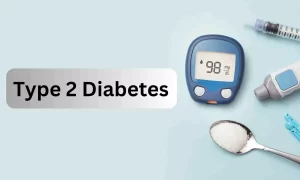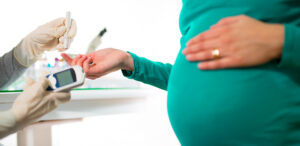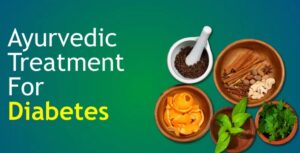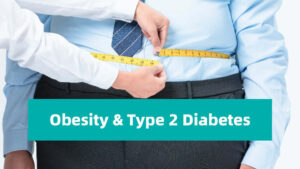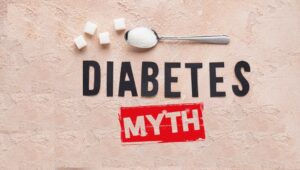What Is Diabetic Ketoacidosis? Symptoms & First Aid

Can Cinnamon and Fenugreek Help Lower Blood Sugar?
Diabetic Ketoacidosis (DKA) is a serious, life-threatening complication that can develop quickly in individuals with diabetes. It occurs when the body does not have enough insulin to use glucose for energy. The body then begins breaking down fat for energy, producing ketones, which accumulate in the blood and make it acidic.
While DKA most commonly occurs in Type 1 diabetes, it can also happen in Type 2 diabetes during illness, stress, or missed insulin doses. Understanding early signs, risk factors, first aid, and prevention strategies is critical for patients, families, and caregivers.
What Causes Diabetic Ketoacidosis?
Diabetic Ketoacidosis (DKA) develops when the body does not have enough insulin to use glucose for energy. Without insulin, the body starts breaking down fat for fuel, which produces ketones, acids that can build up in the blood and become life-threatening if not treated. Several factors can trigger this dangerous condition:
1. Missed or Inadequate Insulin
The most common cause of DKA is missing insulin doses or taking less insulin than required. Without sufficient insulin, glucose cannot enter cells for energy. The body responds by breaking down fat, producing excess ketones and causing blood acidity to rise rapidly. This can happen due to forgetfulness, illness, or improper dosing.
2. Infections and Illness
Illnesses such as flu, urinary tract infections, pneumonia, or gastrointestinal infections place extra stress on the body. During infections, hormones like cortisol and adrenaline increase blood sugar levels, raising insulin demands. If insulin is not adjusted accordingly, DKA can develop quickly.
3. Physical or Emotional Stress
Physical trauma, surgery, or severe emotional stress can disturb blood sugar control. Stress hormones make the body less responsive to insulin, causing hyperglycemia. In individuals with diabetes, this imbalance can lead to ketone accumulation and DKA if not monitored.
4. Certain Medications
Some medications can increase the risk of DKA by affecting insulin production or glucose metabolism. These include:
- Corticosteroids (which raise blood sugar)
- Diuretics (which increase dehydration risk)
- SGLT2 inhibitors (a diabetes medication that can increase ketone production)
Awareness of medication effects and careful monitoring are essential to prevent DKA.
5. Undiagnosed or Newly Diagnosed Diabetes
In some cases, DKA may be the first sign of diabetes, especially Type 1 diabetes in children or young adults. Because insulin production is insufficient, blood sugar rises uncontrollably, and ketones accumulate, often leading to emergency hospital visits before diabetes is even diagnosed.
How Diabetic Ketoacidosis Develops
Diabetic Ketoacidosis (DKA) occurs when the body lacks sufficient insulin to move glucose into cells for energy. Without insulin, glucose remains in the bloodstream, leaving the body starved for fuel despite high blood sugar levels. To compensate, the body begins to break down fat for energy, which produces ketones as a byproduct.
Ketones are acidic molecules, and when they accumulate in large amounts, they alter the blood’s pH, leading to metabolic acidosis. This acidic environment affects multiple organs, including the heart, kidneys, and brain.
At the same time, the high blood sugar causes fluid loss through increased urination, leading to dehydration. Electrolytes such as potassium, sodium, and chloride become imbalanced, which can interfere with normal muscle and nerve function, including the heart.
If untreated, this chain reaction can escalate rapidly. Within hours, DKA can progress to severe organ dysfunction, coma, or even death, highlighting the critical need for early recognition and immediate medical care.
Symptoms of Diabetic Ketoacidosis
DKA develops rapidly, often within 24 hours, and symptoms vary by severity:
| Mild/Moderate DKA | Severe DKA |
|---|---|
| Excessive thirst | Confusion or disorientation |
| Frequent urination | Fruity-smelling breath |
| High blood sugar (>250 mg/dL) | Rapid, deep breathing (Kussmaul) |
| Nausea or vomiting | Unconsciousness or coma |
| Abdominal pain | Severe dehydration |
| Fatigue, headache | Low blood pressure or shock |
Note: Early recognition is critical. Severe DKA can progress to life-threatening complications within hours.
Complications of DKA
Without prompt treatment, DKA can cause serious complications:
- Cerebral edema (especially in children)
- Cardiac arrhythmias due to electrolyte imbalances
- Acute kidney injury from severe dehydration
- Shock from fluid loss
- Coma or death in extreme cases
First Aid for Suspected Diabetic Ketoacidosis (DKA)
Diabetic Ketoacidosis is a medical emergency that can progress rapidly. Acting quickly and correctly can save lives. If you suspect DKA, follow these steps carefully:
1. Assess Blood Sugar and Ketone Levels
The first step is to confirm the signs of DKA. Blood sugar levels in DKA are often above 250 mg/dL. Check for ketones using:
- Urine ketone strips
- Blood ketone meter
Why it matters: Moderate or high ketone levels indicate that the body is breaking down fat for energy, producing acids that can lead to blood toxicity and organ stress. Early detection allows for faster medical intervention.
2. Seek Immediate Medical Help
DKA requires professional hospital care, including intravenous fluids, insulin therapy, and electrolyte correction.
- Call emergency services or go to the nearest hospital without delay.
- Do not attempt to treat severe DKA at home, even if symptoms seem mild.
Why it matters: Delaying medical care can result in rapid deterioration, including coma, shock, or death. Early treatment significantly reduces the risk of complications.
3. Maintain Hydration Carefully
While waiting for medical care, if the person is conscious and able to swallow, provide small sips of water or sugar-free electrolyte solutions.
- Avoid sugary drinks, as they can increase blood sugar.
- Hydration helps slow the buildup of ketones, but it is not a substitute for hospital treatment.
Why it matters: Dehydration is a major concern in DKA and can exacerbate electrolyte imbalances, which may lead to heart or kidney complications.
4. Monitor Vital Signs and Consciousness
Keep the patient sitting upright and alert if possible. Observe for:
- Confusion or disorientation
- Vomiting or nausea
- Rapid, shallow breathing (Kussmaul breathing)
- Signs of fainting or collapse
Why it matters: Monitoring helps detect worsening symptoms early, allowing emergency personnel to act quickly upon arrival.
5. Avoid Dangerous Actions
Certain actions can worsen DKA and should be avoided:
- Do not administer insulin unless prescribed and you are trained.
- Do not delay seeking medical care, even if symptoms appear mild.
- Do not ignore warning signs such as vomiting, high blood sugar, and ketones.
Why it matters: Improper interventions at home can make the condition more dangerous, leading to serious complications before reaching a hospital.
Hospital Treatment for DKA
Once at the hospital, treatment focuses on stabilizing blood sugar, correcting dehydration, and restoring electrolytes:
- IV fluids: Rehydration to correct fluid loss.
- IV insulin drip: Stops ketone production and lowers blood sugar.
- Electrolyte correction: Especially potassium, to prevent heart complications.
- ICU monitoring: Required for severe cases or children.
Preventing DKA: Practical Guidance for Parents and Caregivers
Diabetic Ketoacidosis is preventable when families and caregivers are proactive. Prevention focuses on monitoring, timely insulin administration, hydration, and education, especially during illness or stressful periods. Below are evidence-based strategies to reduce the risk of DKA:
1. Monitor Blood Sugar Frequently
During illness, stress, or unusual physical activity, a child’s blood sugar levels can fluctuate rapidly. Checking blood glucose more frequently than usual allows parents and caregivers to detect abnormal spikes early, enabling timely intervention. Continuous glucose monitors (CGMs) can provide real-time data and alarms for dangerous levels.
2. Test for Ketones Regularly
Ketones build up when the body lacks insulin. During “sick days” or whenever blood sugar exceeds 240 mg/dL, it’s essential to check ketone levels using urine strips or a blood ketone meter. Early detection of rising ketones allows for prompt medical action, reducing the likelihood of DKA.
3. Never Skip Insulin
Skipping insulin, even during mild illness, is a major risk factor for DKA. Children must continue taking their prescribed doses unless a healthcare provider advises otherwise. Adjustments for illness may be necessary, but insulin should never be stopped abruptly.
4. Maintain Adequate Hydration
Dehydration accelerates ketone buildup and worsens metabolic imbalance. Encourage children to drink water or sugar-free electrolyte solutions throughout the day, particularly if vomiting or experiencing diarrhea. Hydration helps stabilize blood sugar temporarily while waiting for professional care.
Additional Tips for Parents and Caregivers
1. Keep Emergency Supplies Accessible
Prepare a diabetes emergency kit containing:
- Glucose meter and test strips
- Insulin and administration supplies
- Ketone testing strips or a blood ketone meter
- Fast-acting carbohydrates (glucose tablets, juice)
- Electrolyte solutions
Having these items on hand ensures a quick response during sudden high blood sugar or illness.
2. Educate the Child and Caregivers
Gradual education is key. Teach children age-appropriate self-monitoring skills, insulin administration, and how to recognize symptoms of low or high blood sugar. Likewise, ensure family members, teachers, and school staff understand warning signs, first aid steps, and emergency protocols.
3. Monitor Emotional and Mental Health
Diabetes can be stressful for children, especially during illness or DKA episodes. Observe for signs of anxiety, mood changes, or burnout, and provide reassurance and support. Emotional stability improves adherence to treatment and reduces the risk of missed insulin doses.
4. Maintain Regular Medical Follow-up
Routine visits with a pediatric endocrinologist or diabetes educator are essential. These appointments allow for adjustments in insulin, review of sick day plans, and monitoring of potential complications, ensuring proactive management of diabetes and reducing DKA risk.
Table: Signs, First Aid, and Hospital Actions
| Warning Sign | Immediate Action | Hospital Intervention |
|---|---|---|
| High blood sugar (>250 mg/dL) | Test ketones; hydrate if conscious | IV insulin, fluids |
| Fruity breath / nausea / vomiting | Call emergency services immediately | Monitor electrolytes, rehydrate |
| Confusion / fainting | Keep patient upright and awake | ICU care if severe |
| Rapid breathing (Kussmaul) | Emergency call, monitor breathing | Oxygen support, electrolyte correction |
| Severe dehydration / low BP | Hydrate cautiously | IV fluids, electrolyte correction |
Summary
Diabetic Ketoacidosis is a rapidly progressing emergency that requires immediate recognition and treatment. Understanding the triggers, symptoms, and first aid steps can prevent severe complications. With timely hospital care and proper prevention strategies, DKA can be managed safely.
Written by:
Dr. Michael Harris, MD, Endocrinologist
Dr. Michael Harris is a board-certified endocrinologist with 15+ years managing diabetes and acute complications, including Diabetic Ketoacidosis (DKA).
Reviewed by:
Linda Carter, RN, CDE, Certified Diabetes Educator
Linda Carter specializes in diabetes education, teaching patients and families strategies for safe management of diabetes emergencies.
References
- American Diabetes Association. Hyperglycemia (High Blood Glucose). American Diabetes Association. https://diabetes.org/living-with-diabetes/treatment-care/hyperglycemia
- ScienceDirect. Kussmaul Breathing. Elsevier. https://www.sciencedirect.com/topics/medicine-and-dentistry/kussmaul-breathing
- American Diabetes Association. Continuous Glucose Monitoring (CGM). American Diabetes Association. https://diabetes.org/advocacy/cgm-continuous-glucose-monitors
- Warrior Salt. Best Electrolyte Drinks for Diabetics. Warrior Salt. https://warriorsalt.com/blogs/news/electrolyte-drinks-for-diabetics?srsltid=AfmBOoqtfskN49Hr3oaRCjc1u0m-985jFEfQZ6ZmWAZUMi40H_LN9izu
- Dhatariya K. Blood Ketones: Measurement, Interpretation, Limitations, and Utility in the Management of Diabetic Ketoacidosis. Review of Diabetic Studies. https://pmc.ncbi.nlm.nih.gov/articles/PMC5734222/
